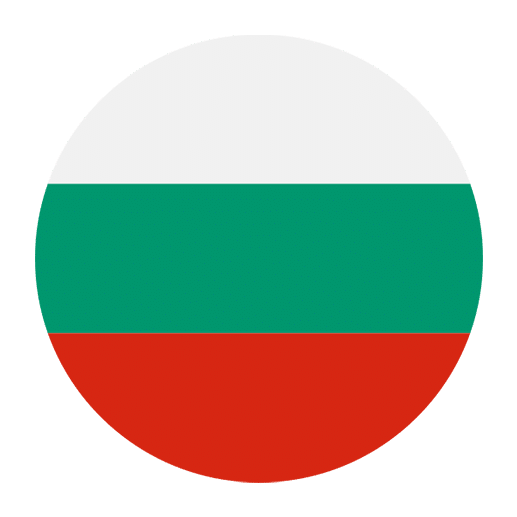Teaching children a new language is an exciting journey that can open up a world of opportunities for them. When it comes to teaching Bulgarian to children, there are several effective methods that can make the process enjoyable and successful. Bulgarian, with its unique Cyrillic alphabet and rich cultural heritage, offers a fascinating learning experience. This article will delve into various strategies and techniques that can be employed to teach Bulgarian to children in an engaging and effective manner.
Understanding the Basics of Bulgarian
Before diving into teaching methods, it is essential to have a basic understanding of the Bulgarian language. Bulgarian is a South Slavic language spoken primarily in Bulgaria. It uses the Cyrillic alphabet, which consists of 30 letters. Unlike English, Bulgarian has a complex system of verb conjugations, noun cases, and definite articles. Familiarity with these linguistic features can help in designing effective teaching strategies.
Starting with the Cyrillic Alphabet
Introducing the Cyrillic alphabet is the first crucial step in teaching Bulgarian. Children often find learning a new script challenging, but with the right approach, it can be an enjoyable experience.
Interactive Games: Use flashcards, puzzles, and memory games to introduce the Cyrillic letters. Associating each letter with familiar objects or animals can make learning more relatable and fun.
Visual Aids: Colorful charts and posters displaying the Cyrillic alphabet can be placed in the learning environment. Visual aids help reinforce recognition and recall of the letters.
Writing Practice: Encourage children to practice writing the Cyrillic letters. Tracing worksheets and handwriting exercises can aid in developing their writing skills.
Building Vocabulary
A robust vocabulary is the foundation of language learning. Building a strong Bulgarian vocabulary can be achieved through various engaging methods.
Thematic Vocabulary Lists: Organize vocabulary around themes such as animals, colors, family, and food. This contextual approach helps children relate words to real-life situations.
Flashcards: Create flashcards with Bulgarian words and corresponding pictures. Flashcards are a versatile tool for vocabulary building and can be used for various games and activities.
Interactive Apps: Utilize language learning apps that offer vocabulary-building exercises and games. Apps like Duolingo and Memrise have specific courses for Bulgarian.
Incorporating Cultural Elements
Language and culture are intertwined, and incorporating cultural elements can make learning Bulgarian more meaningful and enjoyable for children.
Storytelling: Read Bulgarian folk tales and stories to children. This not only introduces them to the language but also to the rich cultural heritage of Bulgaria.
Music and Songs: Introduce Bulgarian children’s songs and nursery rhymes. Music is a powerful tool for language learning, and children often enjoy singing along.
Festivals and Traditions: Teach children about Bulgarian festivals and traditions. Celebrating these events can provide a practical context for using the language.
Interactive and Engaging Activities
Children learn best through play and interactive activities. Incorporating games, role-playing, and hands-on activities can make learning Bulgarian an enjoyable experience.
Language Games
Games are an excellent way to reinforce language skills while keeping children engaged.
Simon Says: Play “Simon Says” using Bulgarian commands. This game helps children practice listening and comprehension skills.
Memory Match: Create a memory match game with Bulgarian words and their English translations or pictures. This activity enhances vocabulary retention.
Bingo: Use Bulgarian vocabulary words to play Bingo. This game can be adapted to various themes and difficulty levels.
Role-Playing
Role-playing activities allow children to practice conversational skills in a fun and interactive manner.
Shopping Role-Play: Set up a pretend market and have children role-play as shoppers and vendors. This activity introduces vocabulary related to shopping and transactions.
Restaurant Role-Play: Create a mock restaurant where children can practice ordering food and interacting with waitstaff. This scenario helps with learning food-related vocabulary and polite expressions.
Hands-On Activities
Incorporating hands-on activities can make language learning more tangible and enjoyable.
Cooking Together: Prepare simple Bulgarian recipes with children. Cooking provides a practical context for using vocabulary related to ingredients, utensils, and cooking actions.
Art and Crafts: Engage children in art and craft projects related to Bulgarian culture. For example, making traditional Martenitsa bracelets can introduce them to cultural traditions while practicing language skills.
Utilizing Technology
In today’s digital age, technology offers a wealth of resources for language learning. Leveraging these tools can enhance the learning experience for children.
Language Learning Apps
There are several language learning apps specifically designed for children that offer interactive and engaging content.
FunEasyLearn: This app offers a comprehensive Bulgarian course with vocabulary, phrases, and interactive games tailored for kids.
Gus on the Go: A language learning app designed for young children, Gus on the Go introduces basic Bulgarian vocabulary through interactive stories and games.
Online Videos and Resources
Online platforms like YouTube provide a plethora of videos and resources for learning Bulgarian.
Educational Videos: Look for YouTube channels that offer Bulgarian language lessons for children. Channels like “Bulgarian for Kids” provide engaging and age-appropriate content.
Interactive Websites: Websites like “Digital Dialects” offer interactive games and quizzes for learning Bulgarian vocabulary and phrases.
Creating a Supportive Learning Environment
A supportive and encouraging learning environment is crucial for language acquisition. Here are some tips for creating such an environment.
Positive Reinforcement
Encourage and motivate children by acknowledging their efforts and achievements.
Reward System: Implement a reward system where children earn stickers or small rewards for completing language tasks and activities.
Praise and Encouragement: Offer praise and positive feedback regularly. Celebrate their progress and milestones in language learning.
Consistent Practice
Consistency is key to language learning. Incorporate Bulgarian into daily routines to ensure regular practice.
Daily Conversations: Incorporate simple Bulgarian phrases and greetings into daily conversations. Encourage children to use the language in everyday interactions.
Language Immersion: Create an immersive environment by labeling objects around the house in Bulgarian. This helps with vocabulary retention and reinforces language use.
Involving Family and Friends
Language learning can be a family affair. Involving family and friends can provide additional support and opportunities for practice.
Language Buddies: Pair children with a language buddy who is also learning Bulgarian. They can practice together and motivate each other.
Family Activities: Plan family activities that involve using Bulgarian, such as watching Bulgarian movies or cooking Bulgarian dishes together.
Adapting to Different Learning Styles
Every child has a unique learning style, and adapting teaching methods to suit these styles can enhance language acquisition.
Visual Learners
Visual learners benefit from seeing and visualizing information.
Visual Aids: Use charts, diagrams, and flashcards to present information visually. Visual aids help reinforce vocabulary and grammar concepts.
Drawing and Illustrations: Encourage children to draw pictures and illustrations related to the vocabulary they are learning. This helps with retention and recall.
Auditory Learners
Auditory learners benefit from listening and hearing information.
Listening Activities: Incorporate listening activities such as songs, stories, and audio recordings. Audiobooks and podcasts in Bulgarian can be valuable resources.
Repetition and Recitation: Use repetition and recitation to reinforce language concepts. Encourage children to repeat words and phrases aloud.
Kinesthetic Learners
Kinesthetic learners benefit from hands-on activities and physical movement.
Interactive Games: Engage kinesthetic learners with interactive games and activities that involve movement. Activities like acting out vocabulary words or playing language-based games can be effective.
Hands-On Projects: Incorporate hands-on projects and crafts that relate to the language. For example, making a Bulgarian flag or creating a scrapbook with Bulgarian vocabulary.
Monitoring Progress and Assessing Skills
Regularly monitoring progress and assessing language skills can help identify areas for improvement and celebrate achievements.
Informal Assessments
Informal assessments can be conducted through various activities and observations.
Language Games: Use language games and activities as informal assessments to gauge vocabulary and comprehension skills.
Conversations and Role-Playing: Engage children in conversations and role-playing scenarios to assess their speaking and listening skills.
Formal Assessments
Formal assessments can provide a more structured evaluation of language skills.
Quizzes and Tests: Administer quizzes and tests to assess vocabulary, grammar, and comprehension. Keep the assessments age-appropriate and aligned with the learning objectives.
Progress Reports: Create progress reports to track the child’s language development. Share the reports with parents and caregivers to keep them informed and involved.
Encouraging Lifelong Learning
Teaching Bulgarian to children is not just about language acquisition; it’s about fostering a love for learning and curiosity about different cultures.
Encouraging Curiosity
Encourage children to explore and ask questions about the language and culture.
Cultural Exploration: Introduce children to Bulgarian history, geography, and traditions. Encourage them to learn more about the country and its people.
Language Projects: Assign language projects that involve research and creativity. For example, creating a travel brochure for Bulgaria or a presentation about Bulgarian holidays.
Promoting Language Use
Encourage children to use Bulgarian beyond the classroom and in real-life situations.
Language Exchange Programs: Participate in language exchange programs where children can interact with native Bulgarian speakers. This provides a practical context for using the language.
Travel Opportunities: If possible, plan trips to Bulgaria or Bulgarian-speaking communities. Immersion in the language and culture can significantly enhance language skills.
Teaching Bulgarian to children is a rewarding and enriching experience. By incorporating interactive activities, cultural elements, and technology, educators and parents can create an engaging and effective language learning environment. Consistency, positive reinforcement, and adapting to different learning styles are key to fostering a love for the Bulgarian language and culture in young learners. With these strategies, children can embark on a successful language learning journey that will benefit them for a lifetime.

